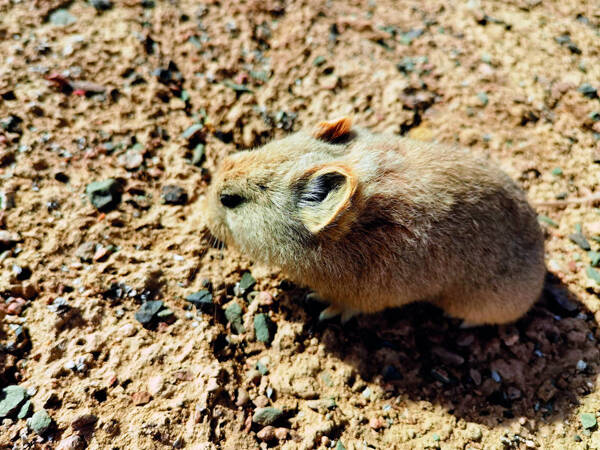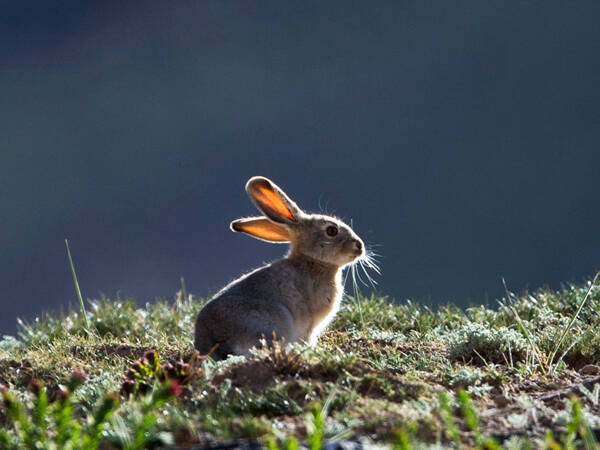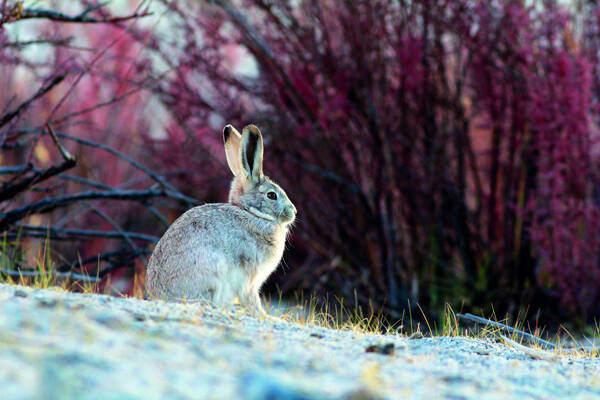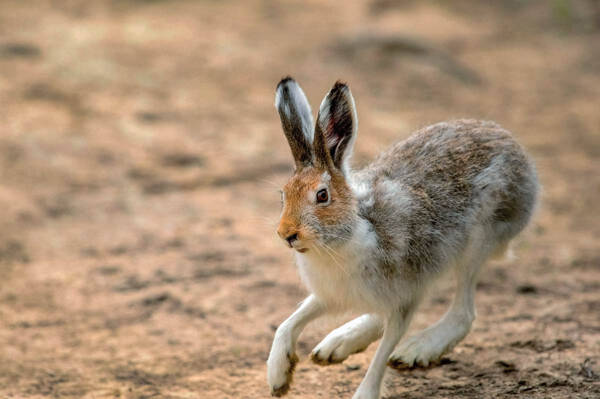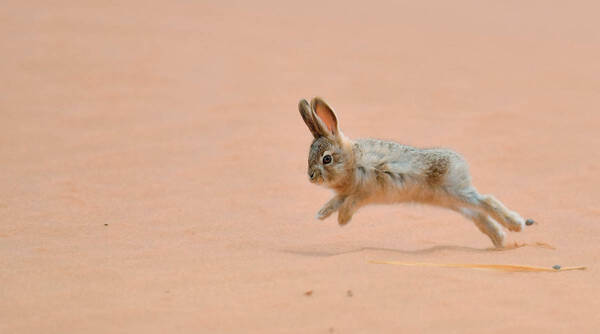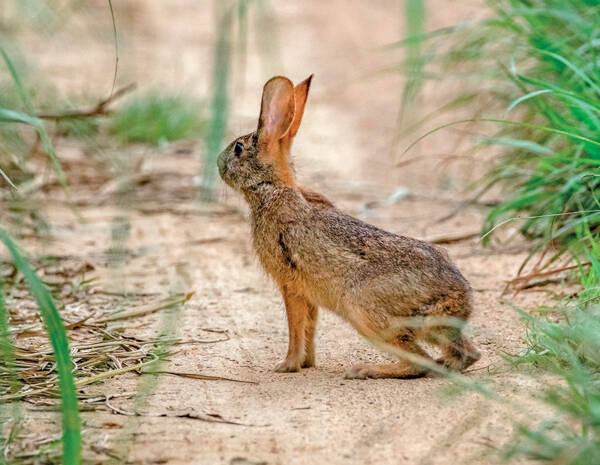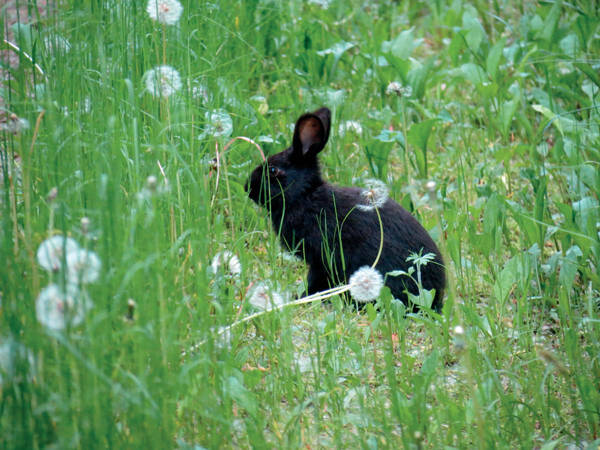Lepus oiostolus
IUCN
LCBasic Information
Scientific classification
- name:Lepus oiostolus
- Scientific Name:Lepus oiostolus,Gray-tailed rabbit, Fluffy rabbit
- Outline:Lagoiformes
- Family:Lagomorpha Leporidae Lepus
Vital signs
- length:40-55cm
- Weight:2-4kg
- lifetime:
Feature
The hair on the buttocks is short and gray, the black stripes on the tail are unclear, and the hair color is also light.
Distribution and Habitat
In China, it is distributed in the Qinghai-Tibet Plateau, including western Sichuan, eastern and southeastern Qinghai, most of Tibet, Qilian Mountains in Gansu, and Kunlun Mountains in southern Xinjiang. Abroad, it is distributed in northern India and Nepal.
Plateau rabbits are rabbits adapted to plateau life. Generally, the altitude is above 3000m, and the highest can reach 5300m. Alpine meadows, shrubs, deserts, and wetlands are its main distribution areas. The species-level classification status is stable, and there are many subspecies, which is relatively confusing.
Appearance
The individual is larger. The color is generally lighter, mainly gray and white. The body hair is long and curly. The head of the head is more black and the chest is dyed light yellow. The ears are large and are the largest among Chinese hares. The tips and edges of the ears are black, the backs of the ears are gray-white, and there are long white hairs in the ears. There is a gray-white hip spot under the tail. The tail is white, with a gray-brown stripe in the center of the back, and the ventral surface of the tail is white. There are light white circles around the eyes. The supraorbital spur is developed and obviously upturned. The coronoid process of the mandible is tilted backward. The snout of the upper jaw is long and narrow.
Details
Plateau rabbits are herbivorous animals. In agricultural areas, they feed on young stems, buds, flowers, fruits, tubers and various weeds of crops. Many types of crops are harmed, such as wheat, beans and vegetables. 80%~90% of its food is various crops, and weeds only account for 10%~20%. In pastoral areas, they gnaw on various high-quality pasture grasses and seeds, affecting the renewal of pasture grasses. In winter, especially after heavy snow, due to the lack of food around, they run to farther places or go to the vicinity of settlements to feed. For example, they enter the livestock pen of the pasture or the grain field to steal oats, barley, peas, etc.
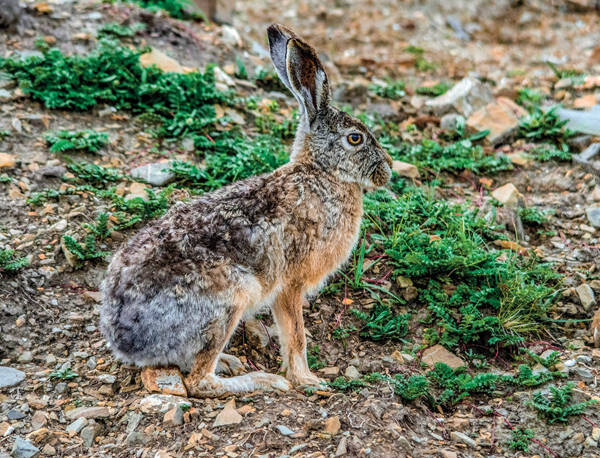
Although plateau rabbits live in various types of environments, they generally have a relatively fixed range of activities. As long as they are not disturbed, they often appear in one place. The frequent strong winds and low temperatures on the plateau make them choose to lie in a sheltered position. Plateau rabbits move in the bushes and grass during the day. During the mating period or in clear weather, you can sometimes see several rabbits feeding together or chasing each other slowly over a short distance. At the same time, you can also hear the call of drum (Go) drum (Go) drum (Go). In the evening, plateau rabbits leave their resting place during the day and start to move around. The whole night is the peak of activity, and they return to the hidden place to rest until sunrise.
Generally, there are no caves. In areas where marmots are active, they often use abandoned caves of marmots. In winter, they dig a nest in the bushes. The shape and size of the nest can be used to identify the gender of the plateau rabbit: the female rabbit's nest is oval, deep and large; the male rabbit's nest is oblong, long and straight.
Plateau rabbits reproduce 2 to 4 litters each year, from April to August, with a gestation period of about 25 days, 4 to 6 pups per litter, and the newborn pups weigh about 100 grams. Due to different distribution areas, there will be certain differences in reproduction: in the Qinghai-Tibet Plateau, plateau rabbits reproduce once a year, pregnancy in July, young rabbits can be seen in August, 4 to 5 rabbits per litter; in Yunnan, pregnancy in April, independent young rabbits can be seen foraging in May.
Plateau rabbits are long, with an average adult weight of more than 2kg. The meat is fine and tender, making it an ideal meat resource animal. Due to its wide distribution and large number, it can be hunted, purchased and sold in an organized manner, and even processed for export. Rabbit skin can be used as general fur.
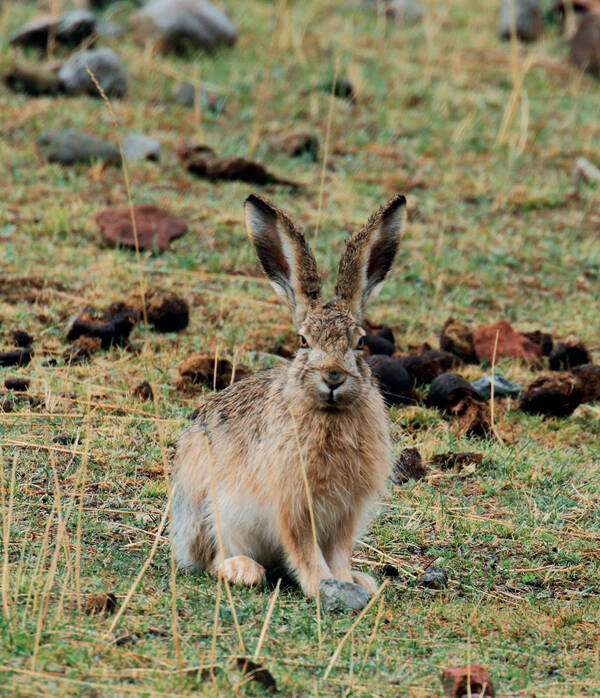
The Qinghai-Tibet Plateau Drug Atlas records that rabbit brain can cure dysentery and intestinal pain, heart (dried) can cure heart disease, and fresh rabbit milk can also cure eye inflammation, etc.
Although plateau rabbits can destroy grassland vegetation, most of them live in alpine grasslands and meadow grasslands, and the harm to animal husbandry is not very serious. Because they are carriers of pathogens of some natural epidemic diseases, in 2000, two strains of plague bacteria were detected from three self-dead plateau rabbits at the Xishui monitoring point in Zhangye, Gansu Province, proving that plateau rabbits can be naturally infected with plague, so they are harmful to humans.
Plateau rabbits have been included in the "National List of Terrestrial Wildlife with Important Economic and Scientific Research Values Protected by the State".
This species is listed in the 2013 IUCN Red List of Threatened Species ver3.1—Vulnerable (VU).

